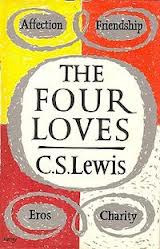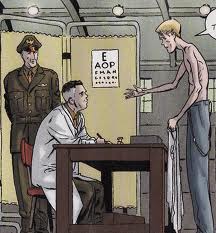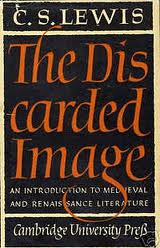The Question of God, Part 7(Freud segment, “Civilization and Its Discontents”; Conversation 7, “The Human Condition”)
One of the most significant transitions in the Story of Western Civilization is that from a “Pre-Modern” to the “Modern” worldview. The “God-Centered” order of Medieval Christendom defined human identity and the human condition in terms of unwavering certainties and unquestioned acceptances of Biblically-based precepts (unfortunately mediated in a fallen world by a sometimes fallible Church). While this worldview did point all things toward the Sovereign Creator God at its center, it also drew firm and controlling boundaries around all areas of human inquiry. And the only hope it seemed to offer was eternal bliss (with, of course, the corresponding threat of eternal damnation). This essentially “centrifugal” worldview, with God firmly in the center and all things focused toward Him, was foundational in Lewis’ life. His apologetic writing aimed at its defense, and a good deal of his creative imagination incarnated the fullness of its hope.
The structural integrity of this “Pre-Modern” worldview was initially tested by the cultural and intellectual enthusiasm of the Renaissance (14th-15th C.). It was further shaken by the spiritual and ecclesiastic challenges of the Reformation (16th C.). In these monumental cultural upheavals we see Modernity’s “conception” through their focus on the individual as “point of departure” for understanding the human condition. Following on this, the Baroque period (primarily the 17th C.) represents the “birth” of Modernity. Descartes’ “Universal Method” (the basis for modern rationalism) and Bacon’s Scientific Method (the basis for modern empiricism) establish the foundations of an emerging “Modern” worldview that place man at the center of powerful new “centripetal” cultural forces.
In the Enlightenment of the 18th C., Western Civilization moves into its “adolescence.” This is a period characterized by opposition to authority, an emphasis on reason, cultural optimism, and a focus on individual liberty and human rights. The human identity became increasingly defined in “scientific” terms, and the human condition became the focus of social and political reform movements. Jean-Jacques Rousseau was a major proponent of this period’s utopian vision of a progressively free and just human civilization. That which was “bad” in the human condition was no longer a matter of sin and morality; it became a project to be resolved through social and political reforms. Socialist movements carried the banner of progressive liberalism; more extreme political revolutionaries turned the ideas of Karl Marx into one of most influential ideologies of the 20th C. Heading into the the century, Modernity was fully “matured.”
For modern secularists like Freud, the existence of evil was a cultural and philosophical (not a theological) problem sure to be resolved in an increasingly “enlightened” world. But the virulence of autocratic governments and authoritative structures in 19th C. Europe, followed by the rise of Fascism and global war in the 20th C., forced humanity wrestle more deeply with the question of evil. “In view of these difficulties,” Freud wrote, “each of us will be well advised, on some suitable occasion, to make a low bow to the deeply moral nature of mankind.” The question for Freud and those like him was now, what was the source of this “deeply moral nature.” How are “righteousness” and “evil” understood in “modern” terms? Why does evil prevail in spite of our most rational and “enlightened” human efforts. What do we make of Modernity’s failure, in so many ways, to deliver on the promises of the “Enlightenment Project”?
Learn more about the development and consequences of “Modernity”—
Ronald Wells, History Through the Eyes of Faith (Christian College Coalition, 1989);
John Paul II, Memory and Identity (Weidenfeld & Nicolson 2005)







